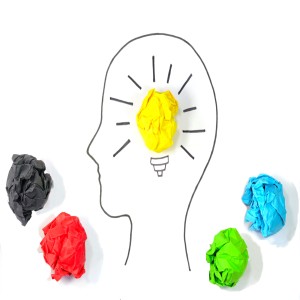Assessment is an opportunity to evaluate learning and provide feedback to students in hopes of improving outcomes. It is a critical junction for learning, because there is a wealth of information in assignments and exams that show educators what it is students know, don’t know, and why students do or don’t understand concepts.
So how do we leverage that data for student learning? Let’s begin by discussing the potential within assessments.
Assessments are an opportunity for educators to:
- Understand student learning
- Provide formative feedback (Hattie, 2012)
- Perform item analysis
The interchange of such data (feedback and item analysis) is the key to student learning. And this data has the potential for the following outcomes:
- Students use feedback to grasp the depth of their understanding of coursework concepts
- Students use feedback to learn how to improve their understanding of concepts
- Educators use item analysis to refine exam and assignment design
- Educators use data insights to inform teaching efficacy (Black and William, 1998, p. 7) and shore up student learning gaps
The above outcomes are achieved by providing meaningful and timely formative feedback to students so that they have the information they need to move forward in learning. They’re also achieved by examining student responses and error patterns (aka using data insights to perform item analysis) so educators have the information they need to move forward with effective teaching. But as with most pedagogical ideals, educators are faced with the limiting factors of time and resources.
There have been ways to speed up the grading process, such as with Scantron-style multiple-choice exams that can be graded through a machine within minutes. But this particular option provides students with zero formative feedback for continued learning, zero flexibility, and limited student performance information.
Here’s the thing: speed shouldn’t sacrifice quality.
Why can’t students and educators have the best of both worlds? Why can’t educators provide formative assessment and receive data insights, all while saving time grading?
Here’s the answer: It is possible. Grading technology now enables quality feedback and action-oriented data for subjects across the board, from STEM courses like computer science, math, and chemistry to psychology and other social sciences. This grading technology is called Gradescope, part of Turnitin’ s suite of products that accelerate the student-teacher feedback loop while upholding pedagogical best practices.
Let’s take a look at one real-life scenario where a professor utilized Gradescope for their psychology courses at a top-ranked, R-1 private university.
This professor utilizes Gradescope in the following ways for both small and large psychology classes:
1. To make assessment more than a numerical or letter grade
Learning opportunities, according to our Gradescope customer, are only such if students receive feedback on assessment. Gradescope doesn’t just provide a numerical assessment (e.g., “+2” or “-1”), but allows instructors to build a detailed and high-quality rubric that can be consistently applied across all student submissions. This standard of feedback provides greater clarity into how points are awarded or deducted and delivers meaningful insight into students' understanding of key concepts.
2. To support a feedback loop and provide higher quality feedback
Gradescope enables instructors to provide thorough feedback that informs students on their learning gaps and next steps. Students can use feedback from one exam to better prepare for the next exam. Such feedback helps students understand concepts faster. Our Gradescope customer loves, for instance, that office hours are now used by students for follow up questions, rather than picking up exams.
3. To use item analysis to inform assessment and measure teaching efficacy
Gradescope’s data insights help inform improvements to assessment and course content. Educators can address potential roadblocks to learning in real-time. Our customer raves about Gradescope’s item analysis--stating that if they didn’t have Gradescope in a large lecture class, they wouldn’t know which questions students were struggling with and know to go back and re-address a concept.
By using Gradescope for assessment, educators have gained insights into student learning, provided digital formative feedback on paper assessments, and used item analysis to shore up learning gaps. This real-life example illustrates the fully realized potential of assessment.
When assessment pairs feedback with data-driven teaching, educators have the opportunity to positively impact student learning. And now it’s even more accessible than ever. Whatever the subject matter, whatever the course, whatever your testing format, Gradescope helps enable feedback loops, formative assessment, and future instruction.





